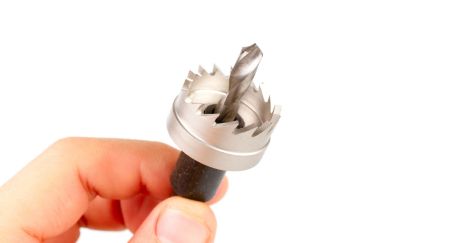Can Hole Saws be Sharpened?
If you use these drill bits often enough, at some point you will wonder whether hole saws can be sharpened. Trying to work with blunt bits or bits that are starting to show signs of wear and tear can cause damage to your workpiece or your drill when it has to work extra hard to do its job. It can pose a significant safety hazard, too, as blunt bits are more likely to slip while you’re working. When your bits are no longer as sharp as they used to be, you have two options: sharpen them or replace the bits. In the case of many bits, sharpening drill bits offers a more affordable option than replacing bits when they start to go blunt. Not all drill bits are easy to sharpen, however. One of the more challenging types of drill bits to sharpen is hole saws. Before you lose hope in ever getting your dull hole bit sharp again, here are a few things you can try.
How to Sharpen Hole Saws
Some of the ways that you can sharpen hole saws include the following:
Hand file
Using a small diamond file, you can sharpen your saw. This method is time-consuming, as you need to sharpen each individual tooth. On the upside, you don’t need any tools to use this method. To sharpen saws by hand, make sure that you work evenly so that each tooth is sharpened properly.
Dremel
A hand-held tool such as Dremel makes the process faster. These tools are generally easy to use, even if you don’t have a lot of experience. You will still need to go slowly to sharpen each tooth separately, but rather than using a file, you’ll have a sanding disc to speed things up and ensure smoother edges.
Bench grinder
You can also use a bench grinder to sharpen saws. For this option, you’ll need to attach the saw to a rotatable vice, and then angle the teeth into the grinding wheel. You’ll need to work carefully and slowly, meaning that this option takes a lot of time and concentration.
Which is Best - Sharpening or Replacing Hole Saws?
So with all of this in mind, is it really worth taking the time and effort to sharpen your hole saws or is it easier to simply replace them when they no longer deliver results? This will depend on time, budget and how often you use these bits. As a general rule of thumb…
- Replace hole bits if you don’t want to waste time, hassle and effort trying to sharpen them yourself
- Replace these bits if you don’t have a lot of experience sharpening drill bits and don’t want to risk broken bits
- Replace saw bits if you want to ensure that your bits are perfectly sharp and fresh out of their packaging
- Replace them if you need to do precision drilling and don’t want to risk poor results arising from poorly sharpened teeth
- Replace them if you don’t have the right tools on hand to sharpen teeth properly
- Replace them if you are using bits made from difficult-to-sharpen materials
The best solution of all is to invest in high-quality bits that are less likely to lose their sharpness. Fracture-resistant HSS (High-Speed Steel) bits are extremely tough, durable and long-lasting. They deliver fast, accurate cutting and a long tool lifespan. This means that you won’t need to keep sharpening your bits or keep replacing them every few months.
At Ruwag, we offer a selection of premium hole saws, including Standard Bi-Metal Saws and Industrial Bi-Metal Saws in selected sizes, for the best results, every time.

